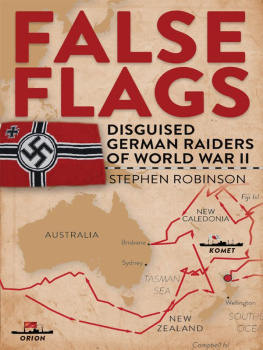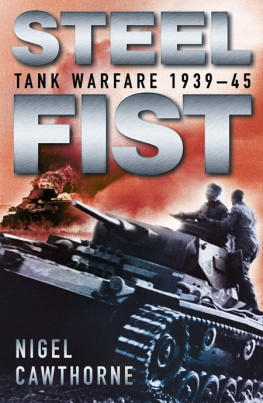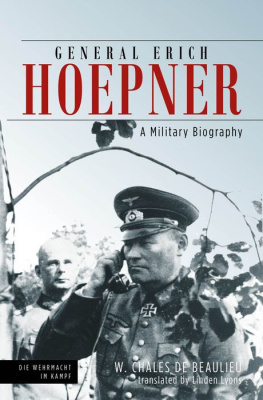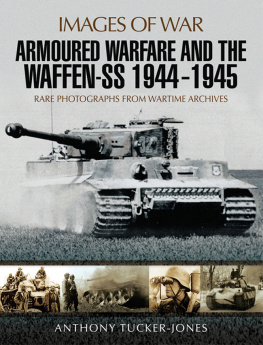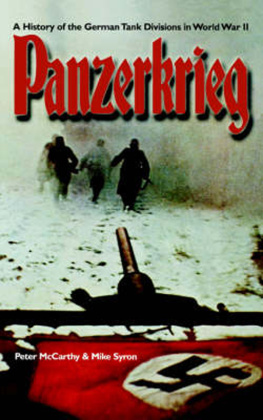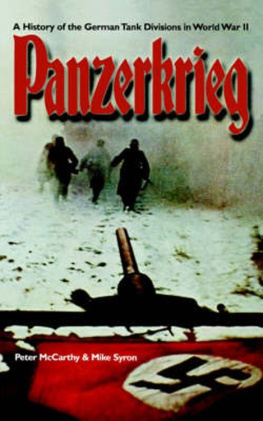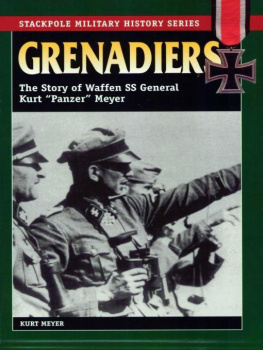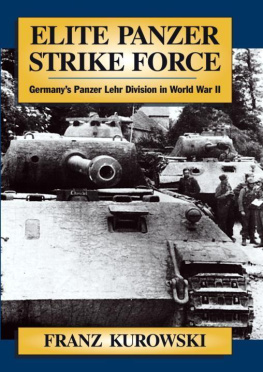Page List
PANZER
COMMANDER
HERMANN BALCK
GERMANYS MASTER
TACTICIAN
STEPHEN ROBINSON

First published 2019
Exisle Publishing Pty Ltd
PO Box 864, Chatswood, NSW 2057, Australia
226 High Street, Dunedin, 9016, New Zealand
www.exislepublishing.com
Copyright 2019 in text: Stephen Robinson
Stephen Robinson asserts the moral right to be identified as the author of this work.
All rights reserved. Except for short extracts for the purpose of review, no part of this book may be reproduced, stored in a retrieval system or transmitted in any form or by any means, whether electronic, mechanical, photocopying, recording or otherwise, without prior written permission from the publisher.
A CiP record for this book is available from the National Library of Australia.
Print ISBN 978-1-925820-00-3
ePub ISBN 978-1-77559-421-5
Designed by Nick Turzynski, redinc. Book Design, www.redinc.co.nz
While every effort has been made to ensure that the information in this book was correct at time of going to press, in a comprehensive history such as this, errors and omissions may occur. The author and publisher welcome any correspondence on such matters, but do not assume and hereby disclaim any liability to any party for any loss, damage, or disruption caused by such errors or omissions.
To my brother James
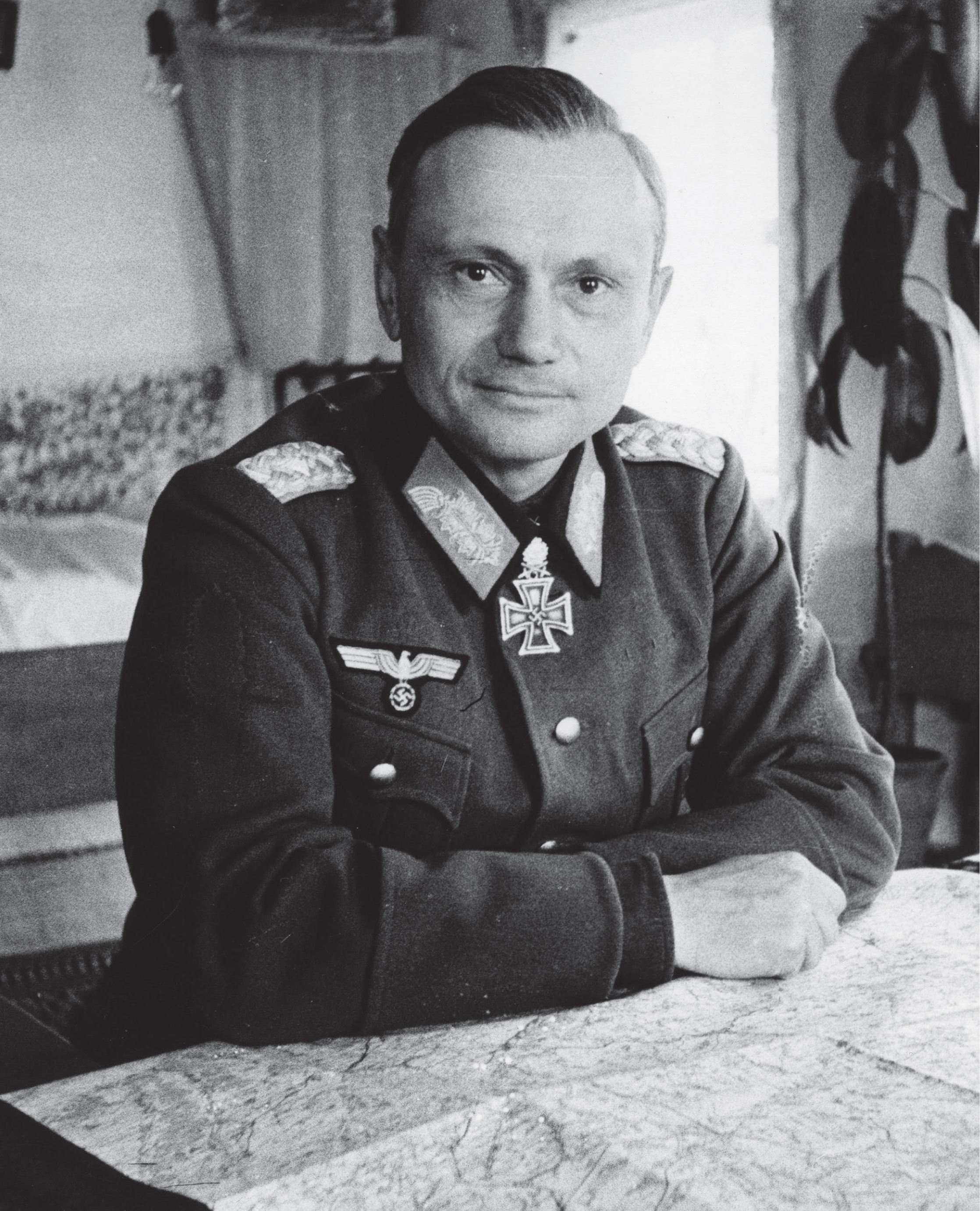
Hermann Balck.
(Bundesarchiv, Bild 101I-732-0118-03)
INTRODUCTION
Although Germany produced a number of truly outstanding Panzer commanders during World War II, few were more successful or more accomplished than Hermann Balck.
Carlo DEste
Perhaps the most brilliant field commander on either side in World War II was Hermann Balck.
Freeman Dyson
HERMANN THE OBSCURE
On 8 May 1945, the day World War II in Europe ended, General Hermann Balck presented himself to Major General Horace McBride, commander of the American 80th Infantry Division, in the Austrian town of Kirchdorf. Balck had come to arrange the surrender of the German 6th Army to American forces, desperate to ensure that his soldiers would not become prisoners of the Soviet Union. This act ended the career of an extraordinary panzer commander, although McBride and his victorious troops did not realize the importance of their new prisoner whose unfamiliar surname, Balck, meant nothing to them.
Balck had earlier established himself as one of the finest armoured warfare commanders in history during the Chir River battles, a series of desperate engagements fought on the frozen steppes of southern Russia during Germanys disastrous Stalingrad campaign. On 8 December 1942, when commanding the 11th Panzer Division, he annihilated the Soviet 1st Tank Corps at Sovchos 79, destroying fifty-three Red Army tanks. One week later, with only twenty-five operational panzers, Balck attacked the Soviet bridgehead at Nizhna Kalinovski and destroyed sixty-five Russian tanks while only losing three panzers.
Balcks extraordinary achievements at the Chir River earned him a well-deserved reputation within the Wehrmacht as a commander who led from the front and won battles despite fighting against overwhelming odds. The German High Command recognized his courageous leadership, awarding him the Knights Cross with Oak Leaves, Swords and Diamonds, a prestigious medal given to only twenty-six other Germans during World War II. General Heinrich Gaedcke, who served under Balck on the Eastern Front, remembered him as a model field commander and a man of unconventional, brilliant ideas and inspirations.
Despite Balcks exceptional military record, he received little recognition after the war. Unlike Erwin Rommel, Heinz Guderian and Erich von Manstein, who will forever be associated in the popular imagination as legendary German commanders, history has largely forgotten Hermann Balck. The historian Carlo DEste accordingly observed that his name is conspicuously missing from the list of successful generals.
Balcks obscurity in the English-speaking world partly resulted from the fact that he spent most of the war on the Eastern Front, distinguishing himself in battles unfamiliar to most westerners the Kiev salient in 1943, Ternopil and Kovel in 1944, and the siege of Budapest in 1945. He only fought the Americans twice, at Salerno following the Allied invasion of Italy in 1943 and during the poorly remembered Lorraine campaign in 1944, when he opposed General George S. Patton.
Balck also contributed to his own obscurity by avoiding the spotlight after the war. While a prisoner in American custody, he refused to participate in historical work conducted by the United States Armys Historical Division, unlike many former German generals who used this opportunity to inflate their own reputations. After being released in 1947, Balck worked in a warehouse to support his family and made no effort to publicize his past deeds. He remained silent when other Wehrmacht veterans wrote their memoirs, notably Guderians Panzer Leader and Mansteins Lost Victories, which became bestsellers and ensured their post-war fame.

Hermann Balck.
(Authors Collection)
The few histories which did mention Balck immediately after the war often portrayed him in an unfavourable light. Hugh Cole, in The Lorraine Campaign (1950), unfairly described him as an ardent Nazi with a reputation for arrogant and ruthless dealings with his subordinates who was just the type of commander certain to win Hitlers confidence. Chester Wilmot in The Struggle for Europe (1952), clearly referencing Hugh Cole, similarly declared:
Actually, Balck had fought the western Allies in France in 1940, Greece in 1941 and Italy in 1943. Despite such slander, his legacy slowly emerged from obscurity and distortion, initially due to the efforts of Friedrich von Mellenthin. As a General Staff officer, Mellenthin had served as an operations and intelligence officer in Rommels Afrika Korps before becoming Balcks chief-of-staff in the 48th Panzer Corps on the Eastern Front. After the war, Mellenthin wrote Panzer Battles (1956), which became a bestseller, and in this book he defended Balcks reputation and sought to correct the historical record. I regret that in that remarkable work, The Struggle for Europe, Mellenthin explained, Chester Wilmot has followed the estimate of Balcks qualities given in the American official history, The Lorraine Campaign, where Balck is portrayed as a swashbuckling martinet. Mellenthin also convinced Balck to end his long post-war silence.
After experiencing a devastating defeat in the jungles of Vietnam, the American Army sought to reform itself by refocusing on its traditional Cold War role of defending NATO against a feared Soviet invasion of Western Europe. However, in doing so it faced the dilemma of how to fight the Red Army and win despite being vastly outnumbered. The armys leadership sought the solution to this problem by studying the Wehrmachts Eastern Front operations and accordingly invited Mellenthin and Balck to America where they became military consultants, participating in symposiums, conferences and wargames during the late 1970s and early 1980s. The Americans found themselves in awe of Balcks first-hand accounts of his Eastern Front battles and General William E. DePuy, commander of Training and Doctrine Command, considered him to be the best division commander in Balcks advice strongly shaped the American Armys AirLand Battle concept, which forms the basis of western military doctrine to this day.




